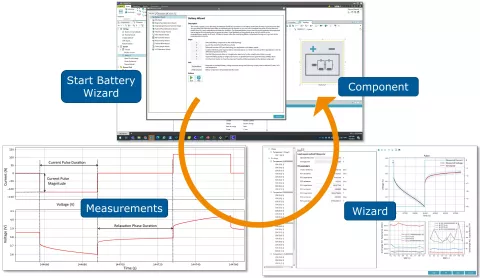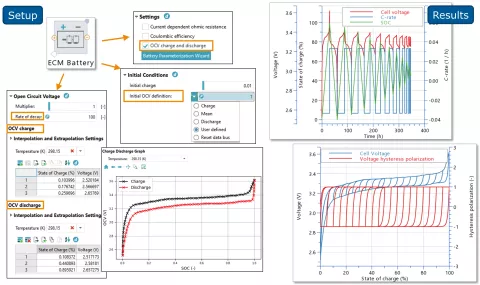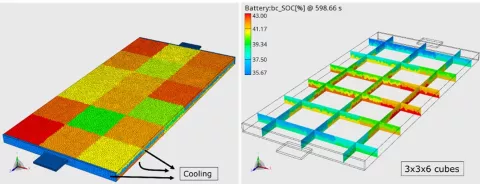
Find out about the highlights of the latest release in our battery solution area.
In order to support in cell design and layouting, AVL CRUISE™ M now provides a set of cell KPI values that are directly derived from the given data. The immediate feedback about the anode/cathode capacity ratio, the individual absolute, gravimetric and volumetric capacities and the masses of active materials on the cell balance allows to set up right-sized electrodes.


This version of CRUISE M offers the option to gain insight into all the causalities between mechanical stresses and the actual intercalation chemistry depending on State of Charge (SOC). The model reveals how stresses cause a change in porosity, which affects the ohmic resistance and power losses of the electrodes. Stress enhances particle diffusion, reduces gradients, modifies potential and, consequently, influences reaction power losses.

CRUISE M offers a dedicated 3D analysis of Pseudo-two-Dimensional (P2D) results. Quantities like the lithium concentration in the solid electrode are shown by a string of hemispheres, giving full insight into gradients along the electrodes and particles at the same time. Particle size distributions are considered by providing 3D results for each individual particle class.
Comparing different potting materials (i.e. epoxy resin, polyurethane, silicone, etc.) and their assessment becomes a straightforward task with this version of CRUISE M.


The existing solution for Equivalent Circuit models has undergone a major functional upgrade.
CRUISE M offers an improved solution by facilitating the entire parameterization workflow with a new, relaunched Battery Parameterization Wizard. It features a new powerful multi-file importer to handle data given individually for different operating points, and a unique pulse identification procedure that allows to break down time series data from Hybrid Pulse Power Characterization (HPPC) tests into the right segments needed for the subsequent fitting procedures.
Two separate Open-Circuit Voltage (OCV) curves (one for charge and one for discharge), can now be considered in CRUISE M.
This version of CRUISE M introduces the possibility to configure the (equivalent circuit) battery component such that current dependent Resistor-Capacitor (RC) values can also be applied.

It is now possible to apply the Batemo model locally at different locations inside a battery cell via so-called Batemo cubes in AVL FIRE™ M. Each Batemo cube covers a certain part of the active jelly roll. This allows to consider local effects with large temperature or potential gradients.
